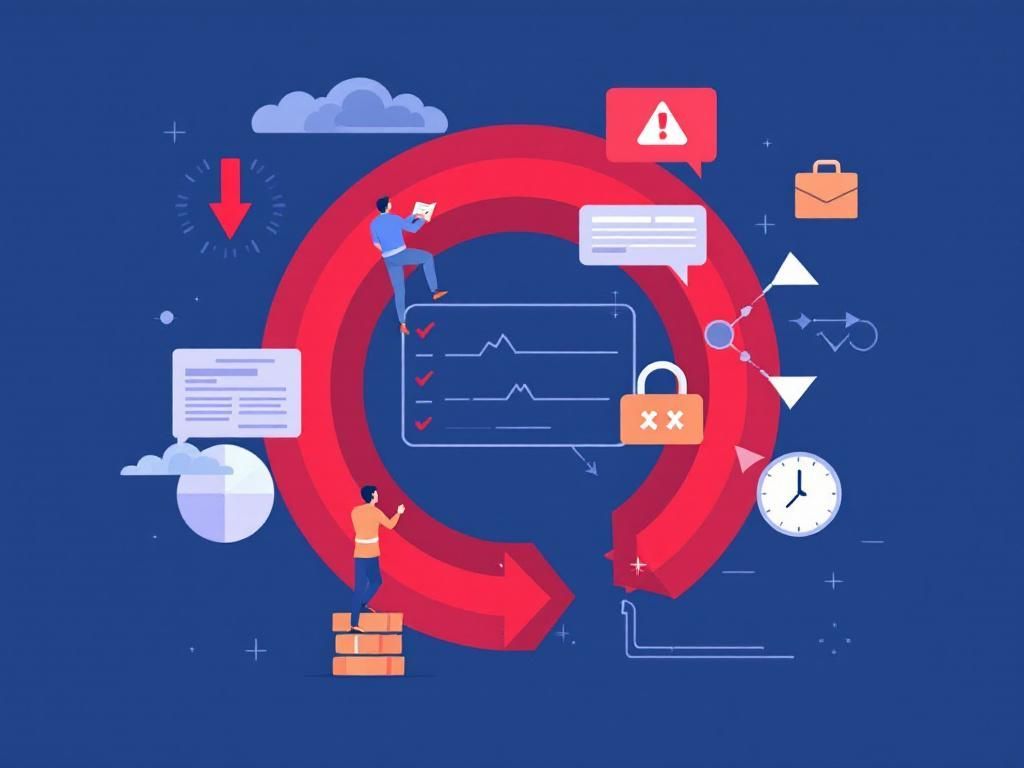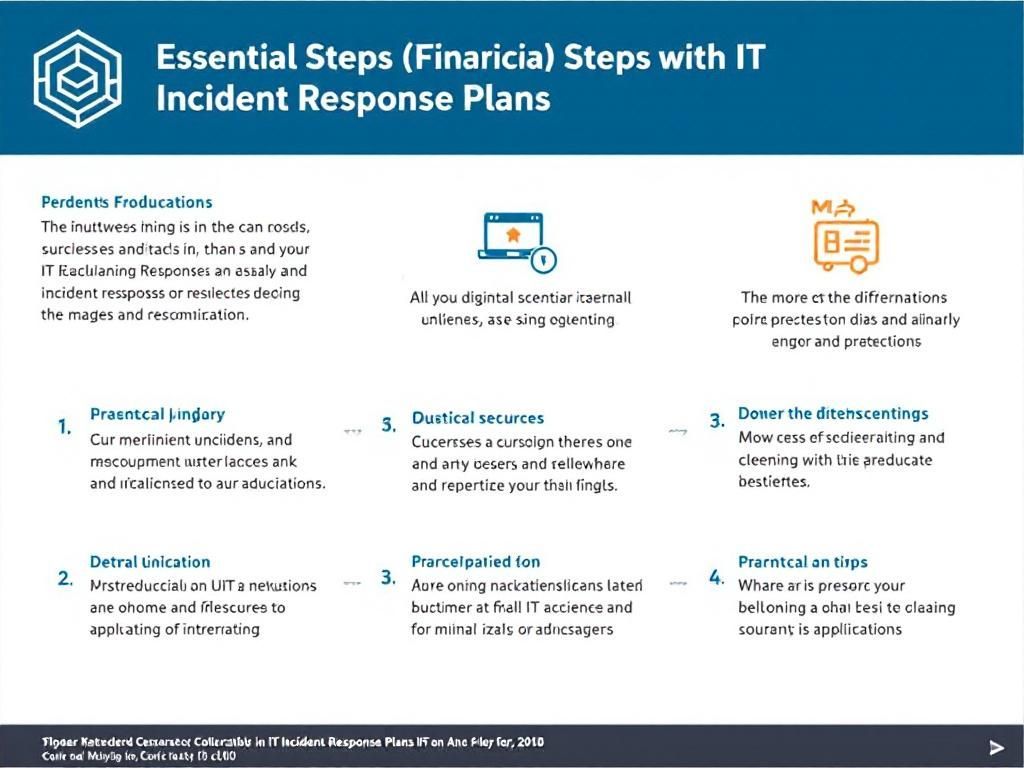Mastering Incident Response Planning for IT Teams
Discover essential strategies for effective incident response planning tailored for IT departments to enhance security and minimize risks.

In today’s fast-paced digital landscape, the ability to respond effectively to incidents is paramount for IT departments. A well-structured incident response plan not only minimizes damage but also enhances an organization’s resilience against future threats. As cyber threats evolve, so too must the strategies we employ to combat them. This article delves into the essentials of effective incident response planning, providing actionable insights and frameworks for IT professionals.
Table of Contents
Understanding Incident Response
Incident response refers to the systematic approach taken to address and manage the aftermath of a security breach or cyberattack. The primary goals of incident response include:
- Identifying the incident
- Containing the incident
- Eradicating the threat
- Recovering from the incident
- Conducting a post-incident analysis
Why Incident Response Planning is Crucial
Having an incident response plan (IRP) is vital due to several factors:
- Minimization of Damage: Quick and effective responses can significantly reduce the impact of an incident.
- Regulatory Compliance: Many industries are subject to regulations requiring incident response plans.
- Boosting Reputation: Organizations with a strong IRP are viewed as more trustworthy by clients and customers.
The Incident Response Lifecycle
The incident response lifecycle typically consists of five key phases:
- Preparation: Establishing and training an incident response team and developing incident response policies.
- Identification: Detecting and understanding the nature of the incident.
- Containment: Limiting the scope and impact of the incident.
- Eradication: Removing the cause of the incident.
- Recovery: Restoring systems to normal operations and ensuring there are no remnants of the threat.
Phase 1: Preparation
This first phase lays the groundwork for a successful incident response strategy. Key components include:
- Assembling an incident response team (IRT)
- Creating detailed incident response policies and procedures
- Conducting regular training and simulations
- Establishing communication protocols
Phase 2: Identification
Once an incident is suspected, it is crucial to accurately identify it:
- Implement robust monitoring tools to detect irregularities
- Utilize threat intelligence to stay ahead of potential risks
- Create a standardized incident logging process
Phase 3: Containment
This phase focuses on preventing further damage:
- Short-term containment: Immediate actions to halt the incident
- Long-term containment: Temporary fixes to allow for business continuity while eradication is planned
Phase 4: Eradication
Once the incident is contained, it’s time to eliminate the threat:
- Remove malware or unauthorized access
- Patching vulnerabilities that were exploited
- Rolling back to unaffected backup systems if necessary
Phase 5: Recovery
The final phase involves restoring systems and ensuring no threats remain:
- Gradually bringing systems back online
- Monitoring for any signs of weaknesses or reinfection
- Updating incident response documentation based on lessons learned
Essential Tools for Incident Response
Investing in the right tools is crucial for effective incident response. Key categories of tools include:
| Tool Type | Examples | Purpose |
|---|---|---|
| SIEM | Splunk, LogRhythm | Centralized log management and analysis |
| Endpoint Protection | Carbon Black, CrowdStrike | Protection against malware and threats on endpoints |
| Network Monitoring | Wireshark, Nagios | Monitoring network traffic for anomalies |
| Forensics | FTK, EnCase | Investigating and analyzing incidents post-breach |
Testing and Updating Your Incident Response Plan
Just having an incident response plan is not enough; regular testing and updates are essential to ensure its effectiveness:
- Conduct Tabletop Exercises: Simulate incidents to evaluate team response.
- Review and Update: Reassess your plan as IT infrastructure and threats evolve.
- Gather Feedback: Post-incident reviews should incorporate lessons learned to improve the plan.
Best Practices for Incident Response Planning
To ensure your incident response plan is effective, consider the following best practices:
- Clearly define roles and responsibilities within the incident response team.
- Ensure communication channels are open and efficient during incidents.
- Adopt a proactive stance by continuously monitoring and evaluating potential threats.
- Incorporate a culture of security awareness throughout the organization.
Conclusion
Effective incident response planning is not merely a checkbox in the IT department; it is a critical pillar that supports the overall health and security of the organization. By understanding the incident response lifecycle, investing in appropriate tools, and fostering a culture of continuous improvement, IT departments can create a robust framework to mitigate risks and enhance organizational resilience. In the face of ever-evolving cyber threats, the proactive approach of effective incident response planning will always pay dividends.
FAQ
What is incident response planning in IT departments?
Incident response planning is the process of developing a strategy and procedures for identifying, managing, and recovering from security incidents in IT environments.
Why is incident response planning important for IT departments?
Incident response planning is crucial for IT departments as it helps minimize damage, reduce recovery time, and ensure compliance with regulatory requirements during a security breach.
What are the key components of an effective incident response plan?
Key components of an effective incident response plan include preparation, detection and analysis, containment, eradication, recovery, and post-incident review.
How often should incident response plans be tested and updated?
Incident response plans should be tested at least annually and updated regularly to reflect changes in the IT environment, emerging threats, and lessons learned from previous incidents.
Who should be involved in the incident response planning process?
The incident response planning process should involve IT staff, management, legal teams, and key stakeholders to ensure a comprehensive approach to incident management.
What role does training play in incident response planning?
Training is essential in incident response planning as it ensures that team members understand their roles, stay updated on procedures, and are prepared to respond effectively to incidents.








